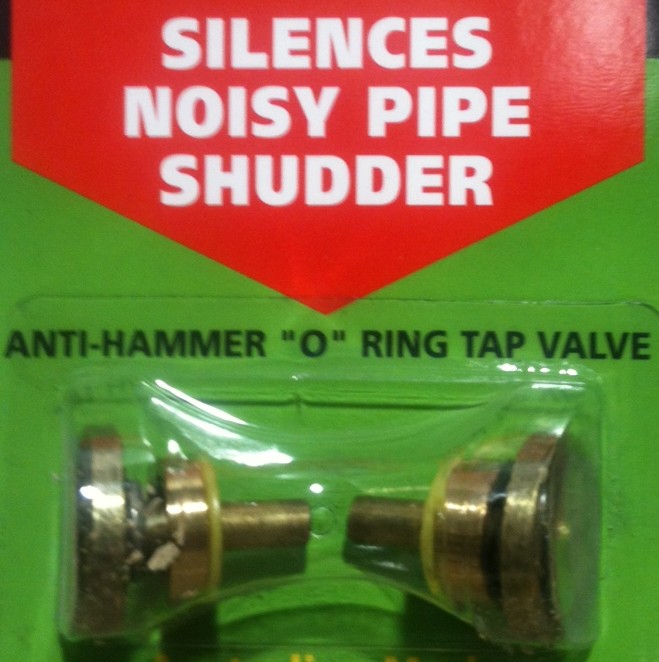If you are getting water hammer in your new house it can be really annoying.
As the problem is caused by fast flowing water being stopped suddenly here are some options to cure it.
Slow the overall speed of flow down
Pressure, which affects the speed of water flow, does vary depending on your location. By turning down valves you will counteract the high pressure and slow the flow down.
These are both no cost options which are worth trying first.
- To the whole house
If you have got very high pressure at your property you may be able to turn down the external stop tap to the house, while still getting plenty of flow to your taps.
- To the washing machine and dishwasher
These appliances have separate supply valves which can be turned down. The machines will take a little longer to fill adding a couple of minutes to the wash time………..but how many of us are in that much of a rush!
Don’t stop the flow as fast
Lever action taps are the worst kind of taps for causing water hammer because they can be shut off quickly.
Softer slowing of flow, rather than a sudden stop will reduce water hammer.
These are three options to achieve a softer flow cut off in, listed in order of increasing cost.
- Slowly turn off taps.
The no cost option……….but doesn’t always work if you have got children, or just have fast ‘lever action’ taps or mixers.
- Fit anti- hammer tap valves
These replace the Standard valve inserts with a unit that includes a spring. The spring allows any pressure surge to escape past it and means the tap need more of a turn, and thus longer time, to fully close.
Typically they cost around $6 each plus fitting.
Not suitable for the more complex mixer units.
- Fit a surge arrester
This device is fitted to the pipe before the valve. The cylinder has a piston that separates the water from compressed air in the top.
When the valve shuts some of the water (and the pressure surge) is diverted into the arrester pushing the piston up and compressing the air. It acts a bit like car ‘shockers’ to slow the water flow.
There are several sizes of arrester depending on your system with prices starting at around $70 plus fitting.
Fit a Pressure Reducing Valves
See this link for more information: PRV
See Settling In for more information about when you move into your new house.
See Rattling and Thumping Pipes for more noise problems.
